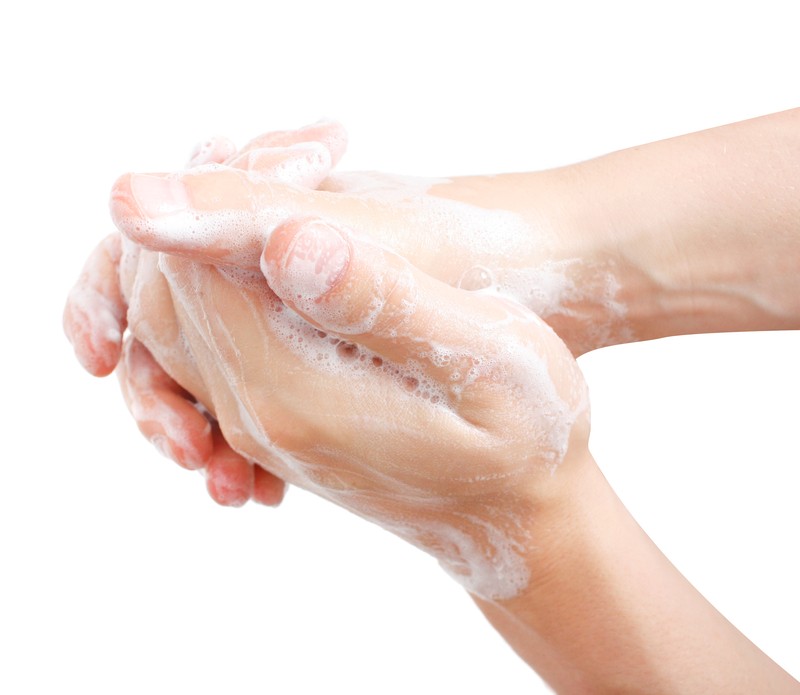Before the settlers introduced the bricks of soap we still commonly use today, Native Americans kept clean through the use of a variety of soap plants, which are so named because of the cleansing lather they produce. Learn some of these highly useful plants below.
Most of the soap plants that you can find in the wild were used by the Native Americans and the first pioneers. Although they are different from the old fashioned soap that your grandma used to make on the farm, these plants work just as well and they are a great substitute for the traditional soaps.
Yucca (Yucca spp.)
Although many prefer to use the root to make soap, digging up the root is an intense labor and you may even get fined for doing so because some Yucca species are listed as endangered. To make soap easily you can cut the leaves (even one would do) and strip them into fibers until you have a handful of very thin strands. Add water and agitate between your hands until soap forms. You will need to pay attention when cutting the lives because you can hurt yourself with the sharp tips or you can slice your fingers on the edges of the leaf. Make sure you snip off the sharp tip before you strip the leaves.
Mountain Lilac (Ceanothus spp.)
To make sure you have mountain lilac that can be used as soap you can do a simple test. Take a handful of blossoms, add water and rub them between the hands. If you get a rich lather with a mild aroma, you got the right plant! The plant will lose its flowers early summer and it will form some sticky green fruits. Don’t worry if you missed the flowering period of the mountain lilac because the fruits can also be used to make soap. The early pioneers used to dry the fruits and used them for soap when needed. If you decide to dry the fruits and store them for later use, you must know that the fruits will get very hard and you will need to ground them into a fine powder before using it as soap. Once you have the powder, add water and rub vigorously.
Soaproot (Blitum californicum)
The first pioneers learned to make soap from the Native Americans and they used to preserve the root in a dark, cold place for later use. In order to make soap you will need to grate the root with a sharp knife. Add water and rub between the hands to obtain a soap that many consider superior to store-bought soaps. The taproot produces a frothy lather that has very good cleansing properties. This plant is harder to find since most of those who know about its cleaning properties would take entire taproots and store them for later use. It can be found only in isolated patches and if you plan to use Soaproot, make sure you only use small taproots and leave the rest.
Amole (Chlorogalum pomeridianum)
The white bulb is stick and has many layers, just like an onion. You can take some of these layers, add water and agitate between your hands. As a result, you will obtain a rich lather that can be used for any sanitation operation you might need. You can use it to take a bath, to wash your hair and even to clean your clothes. You can also dry the bulb for later use, but just like for all other soap plants, the soap made from the fresh parts is far superior.
Buffalo Gourd (Cucurbita foetidissima)
The Native Americans used the plant as rattles, but also as soap to for washing clothes. In order to make soap, they used the tender growing tips or the leaves of the plant. Adding water and agitating between the hands will result in a green frothy lather that has satisfactory cleansing proprieties. If you decide to use buffalo gourd to make soap, you have to handle the leaves with care as they are covered with tiny rigid spines. These tiny hairs are known to cause irritation to the skin for some people and many survivalists will use this soap plant as a last resort.
Bouncing Bet (Saponaria officinalis)
There are various ways you can use the leaves to make soap. You can agitate the fresh leaves between your hands with water or you can boil them to produce a lather liquid that has the ability to dissolve fats or grease. Take a handful of fresh leaves, bruise and chop them for 30 minutes in 1 pint of water. Strain the liquid and use it as you would use liquid soap. This plant has satisfactory cleansing proprieties and it is a good alternative if it grows abundantly in your area.
Undoubtedly, soap plants are most useful to the person surviving out in the wilderness without access to normal soap. Staying clean will be a lift to your spirits in a survival situation, and provides a more human aspect to the whole prospect of having to sleep in the dirt. Surprisingly, some of these natural soaps work so well that those who have an ample supply of the plants on their property will solely rely on them for their cleaning needs.
Surprisingly, some of these natural soaps work so well that those who have an ample supply of the plants on their property will solely rely on them for their cleaning needs.
For more information on soap plants and their history, you can read more at Preppers Will.

Rob Mcdowell
@
Die hard survivor got some good posts thumbs up fellas.